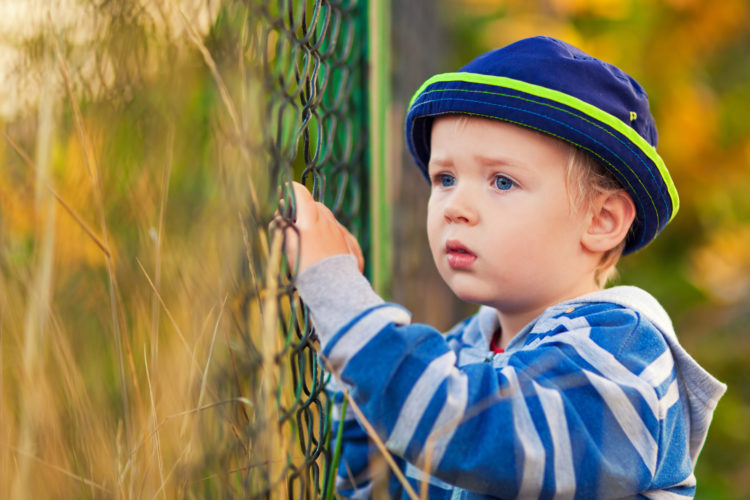
As parents of children with autism spectrum disorders well know, kids with ASD often have a tendency to wander. This is extremely stressful for families because it’s so dangerous for their children. If this is a problem for your family, it’s important to develop a multifaceted plan to prevent wandering.
- First, make sure your home is secure. Deadbolts that require keys on both sides can help keep doors secure, but it’s also a good idea to have a home security system installed. Even inexpensive battery-operated alarms on doors can help keep your child safe. Hook and eye locks above your child’s reach can help secure a door, and putting STOP signs on doors, windows, and other exits can help deter a child from leaving.
- A locating device might be a good idea. Local law enforcement can help you acquire Project Lifesaver or LoJack SafetyNet services. These are tracking devices worn on the wrist or ankle that work through radio frequency, but there are also GPS tracking systems available.
- Consider getting your child an ID bracelet. A medical ID bracelet with your name, telephone number, and other important information, like the fact that your child has ASD and whether or not he or she is nonverbal, is a good idea. If your child is averse to the idea of a bracelet or necklace, a temporary tattoo with your contact information will also work.
- Make sure your child knows how to swim. A tendency to wander and an attraction to water can be a very dangerous combination. Get your child swimming lessons, being sure to choose a program designed for special needs children, and one that includes a lesson with clothes on. If you have a pool, keep it fenced and take care to remove any toys between uses.
- Get to know your neighbors. Make sure your neighbors are aware of your child’s special needs and know how to look out for his or her safety. You might also consider giving neighbors a photo of your child.
- Make your local first responders aware. It’s important to give important information to first responders before an issue arises. Create an informational handout with pertinent information and give copies not only to first responders, but also to neighbors, family members, and friends.
- Consider a tool kit. Autism Speaks has an Autism Safety Kit to help you formulate a plan to protect your child with ASD. The Autism Wandering Awareness Alerts Response and Education Coalition (AWAARE) also has many resources to help, and the National Autism Association offers the Big Red Safety Toolkit, designed to provide assistance to families of kids with ASD. There’s also the Big Red Safety Toolkit for First Responders, to help first responders understand ASD and become better equipped to respond to an emergency situation in which a person with ASD is involved.
For over 20 years, The Behavior Exchange in Plano and Frisco, Texas has been helping children with autism spectrum disorders, behavioral issues, developmental delays, and other special needs to reach their full potential. Our staff is dedicated to helping children achieve their goals, and with the help of families, schools, and other professionals, we apply the patience, focus, expertise, and time that it takes to improve behavioral difficulties. Our goal is to turn every family into a happy family, turn children into successful individuals, help parents to feel empowered, and increase the effectiveness of schools. Providing individualized, early-start therapy, and educational programs for children of all ages, we offer ABA therapy that’s personalized to meet each child’s unique needs. For more information about how we can improve your child’s life and yours, call 972.755.3802, or contact us through our website.
